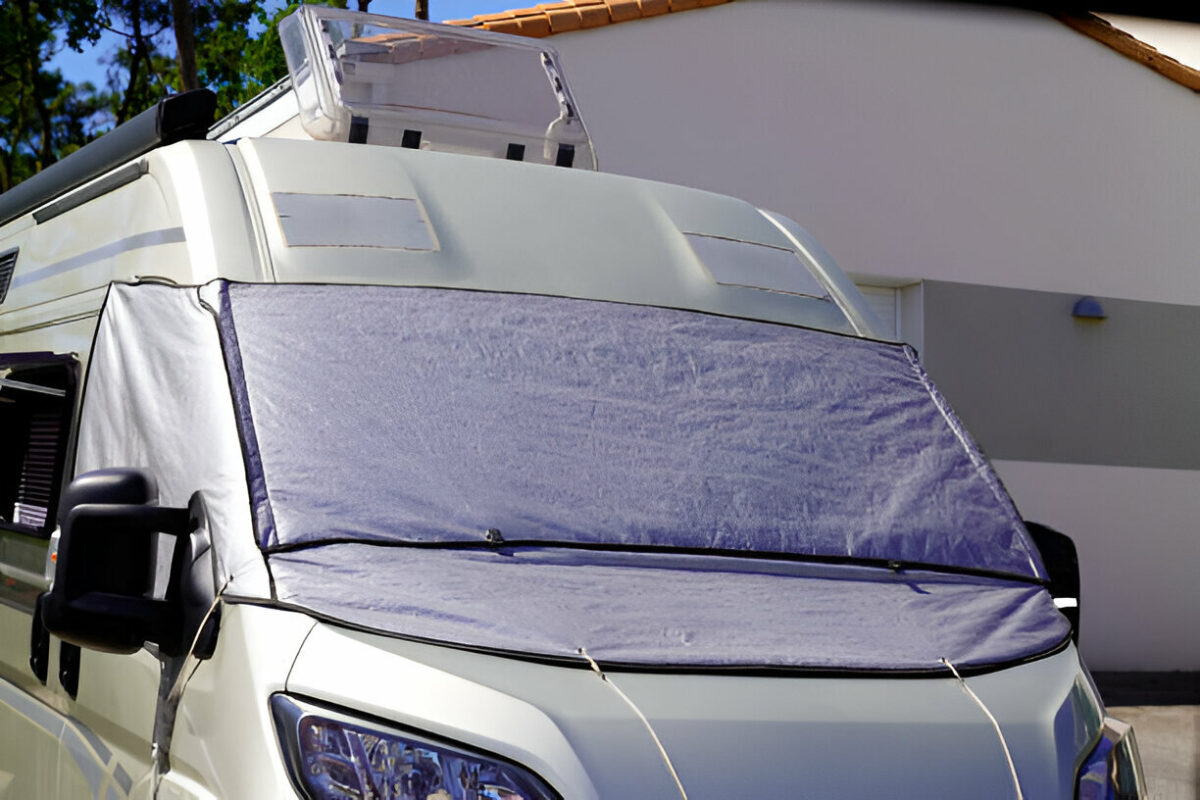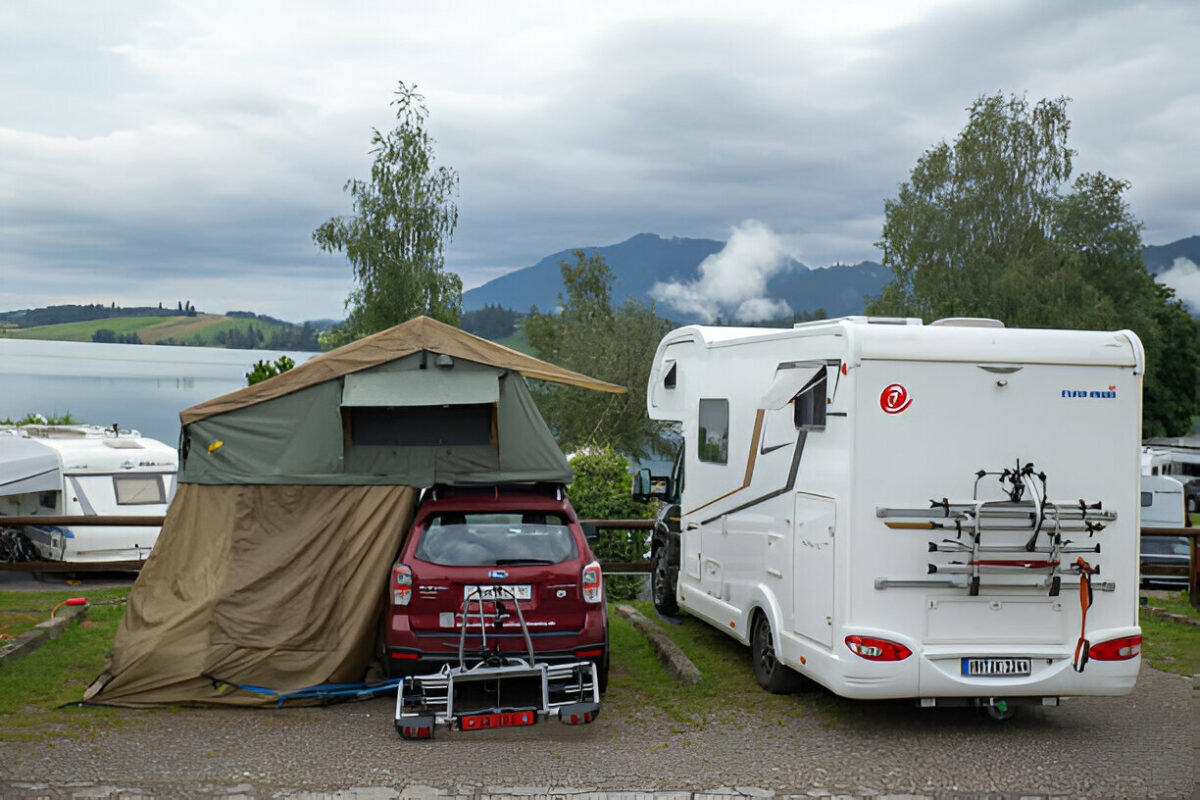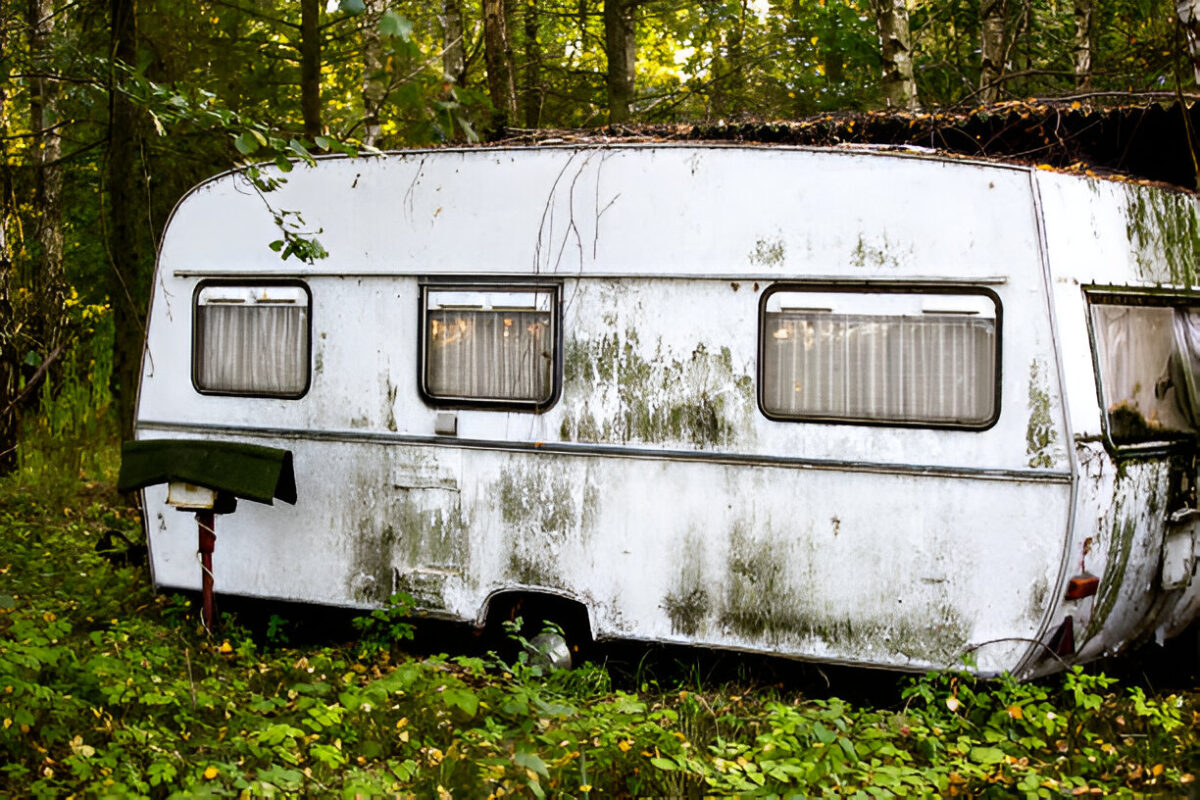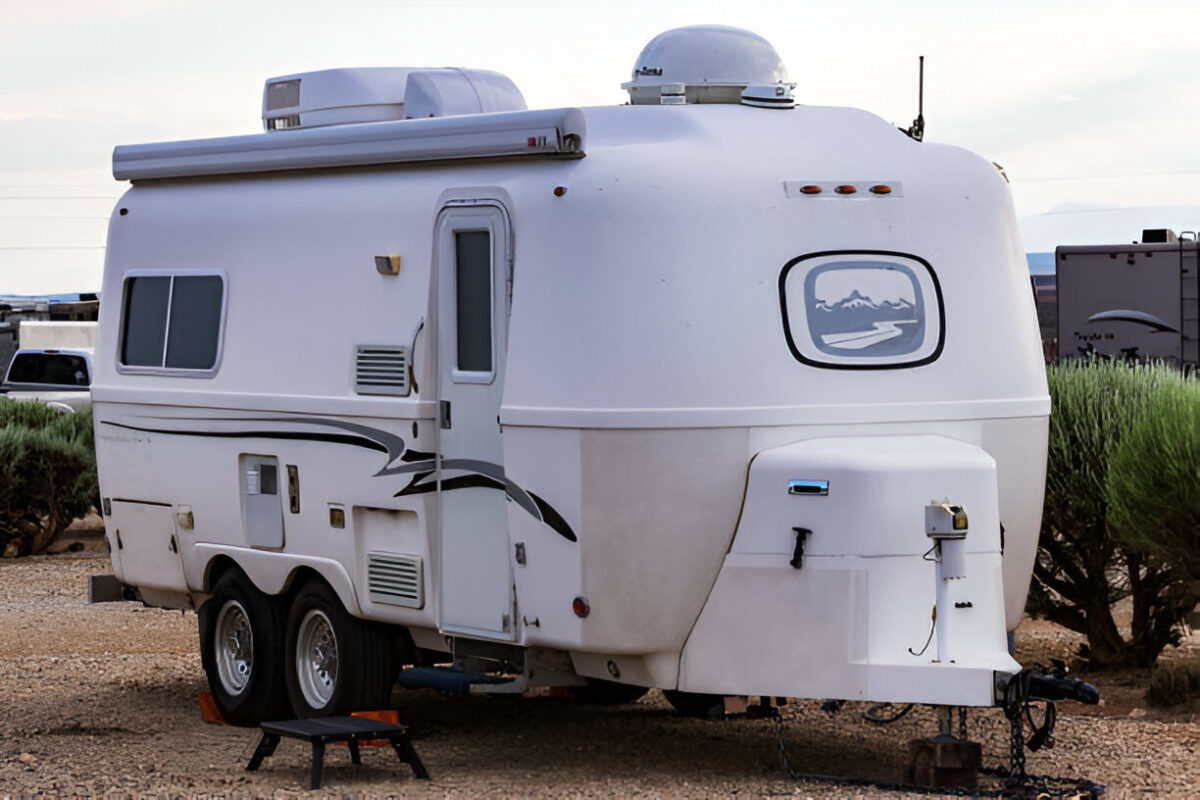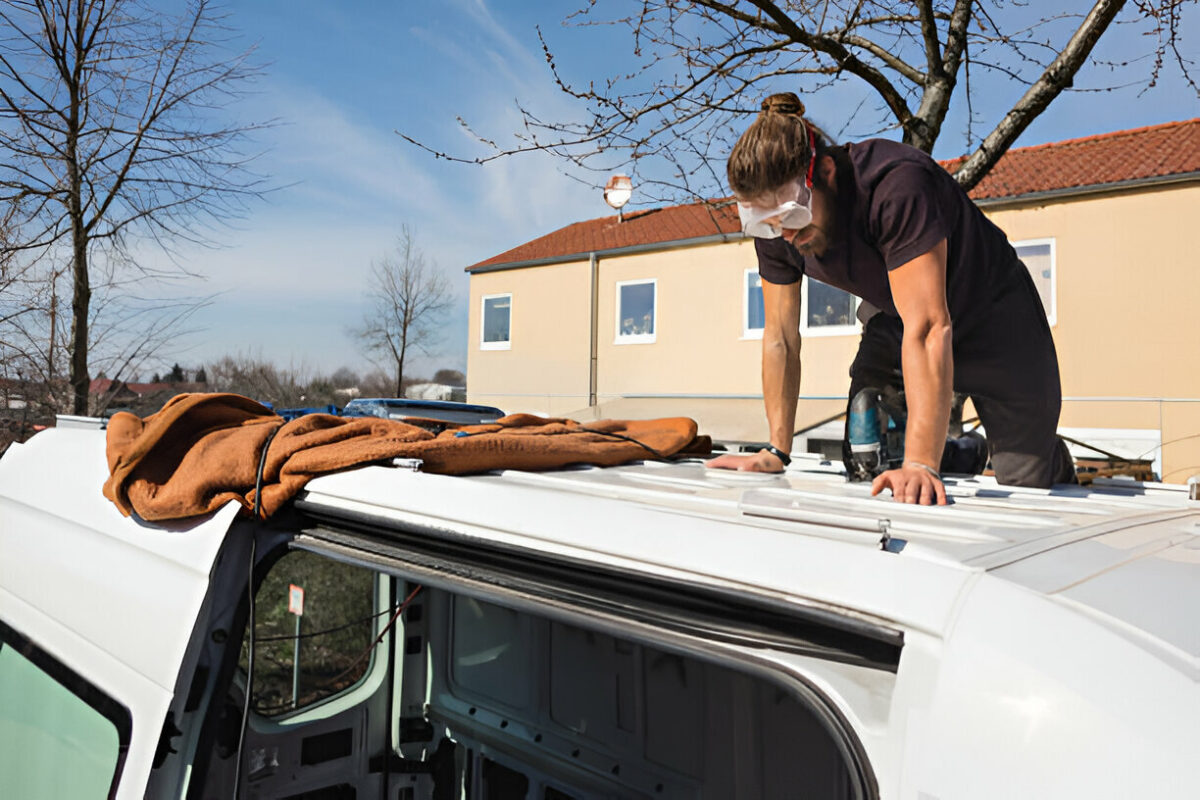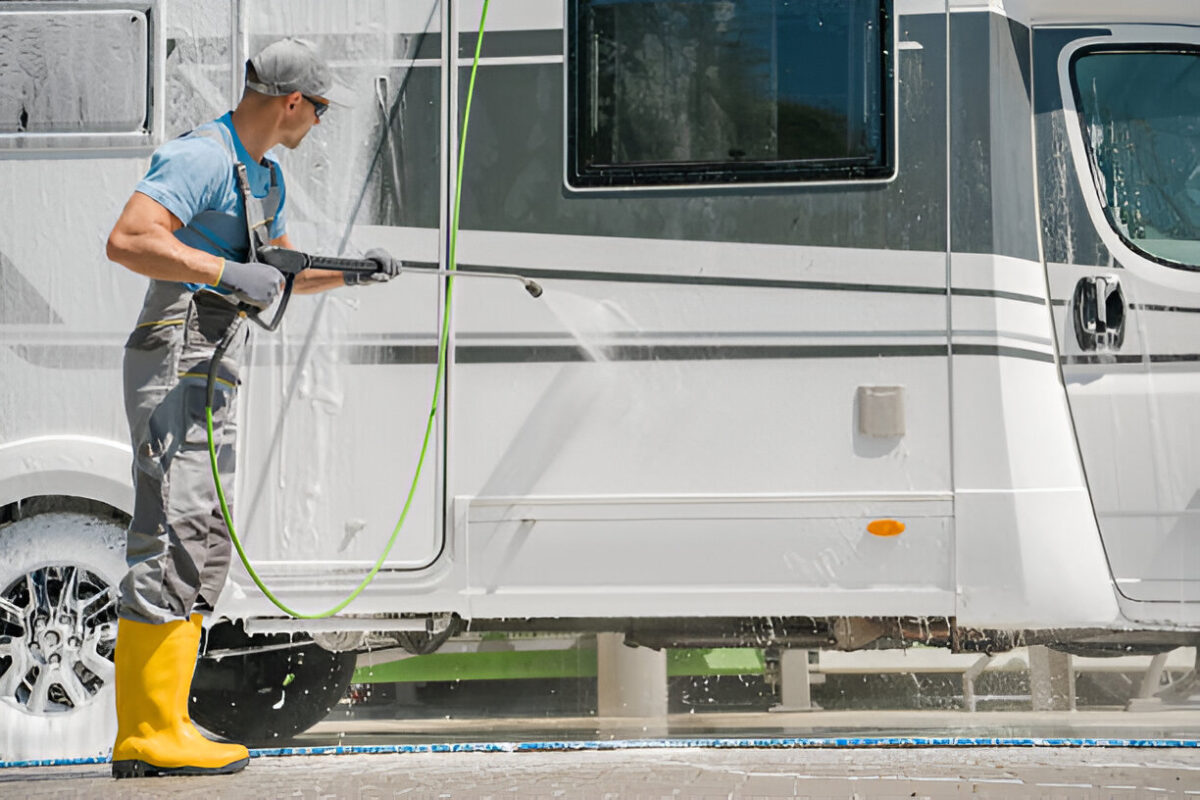How Does The RV Roof Replacement Process Work?

When your RV’s roof shows signs of wear and tear, it’s essential to address the issue promptly. A well-maintained roof ensures your RV remains safe and comfortable. But how does the RV roof replacement process work? Let’s dive into the details.
Understanding the Need for Replacement
First, recognize why a roof replacement might be necessary. Over time, exposure to elements like sun, rain, and snow can damage your RV’s roof. Cracks, leaks, and general wear are common indicators that it’s time for a replacement. Ignoring these issues can lead to more significant problems down the road, including water damage inside your RV and potential structural issues.
Initial Assessment and Inspection
Before starting the replacement process, a thorough inspection is crucial. This step helps identify the extent of damage and the type of materials needed. A professional will examine your RV’s roof for any hidden issues. This inspection ensures that the replacement will be effective and long-lasting. They will look for issues such as rotting wood, rusted metal, or compromised seals, which can all affect the integrity of your new roof.
Choosing the Right Materials
Once the inspection is complete, you’ll need to choose the appropriate materials for the replacement. Various options are available, including rubber, fiberglass, and metal. Each material has its benefits:
- Rubber Roofing: Also known as EPDM (Ethylene Propylene Diene Monomer), rubber roofing is a popular choice due to its affordability and flexibility. It’s highly resistant to UV rays and can handle extreme temperatures. It’s also relatively easy to install and repair.
- Fiberglass Roofing: This option is durable and resistant to harsh weather conditions. Fiberglass roofing provides a smooth, seamless finish that can enhance your RV’s appearance and protect it from leaks. It’s also lightweight and strong, making it a good choice for those who need extra durability.
- Metal Roofing: Metal roofs, including aluminum and steel, offer excellent longevity and resistance to severe weather. They reflect sunlight, which can help keep your RV cooler. Metal roofs are also resistant to fire and pests, adding an extra layer of protection.
Preparation and Removal
The next step involves preparing the RV for the replacement. This preparation includes removing the old roof material. It’s essential to do this carefully to avoid damaging the underlying structure. Proper removal also ensures that the new roof adheres well and lasts longer. During this stage, the RV’s roof deck is inspected for any damage that may need repair before the new material is applied.
Installation of the New Roof
With the old roof removed, the installation of the new roof can begin. This process typically involves laying down the new material and securing it in place. The installation will vary depending on the material chosen:
- For Rubber Roofing: The installation involves rolling out the rubber membrane, trimming it to fit, and securing it with adhesive or mechanical fasteners. Seams are sealed with a special tape or adhesive to prevent leaks.
- For Fiberglass Roofing: The process includes applying a gel coat or resin over a fiberglass mat to create a smooth and durable surface. Once cured, the fiberglass is trimmed to fit and sealed around the edges and seams.
- For Metal Roofing: Metal panels are laid out and secured with fasteners. Overlaps are sealed with a compatible sealant to ensure a watertight finish. Flashing is installed around vents and other roof penetrations to prevent leaks.
Finishing Touches and Inspection
After installing the new roof, the final touches are essential. This includes checking for any gaps or areas that need additional sealing. A thorough inspection ensures everything is correctly installed and functioning as expected. Any necessary adjustments or repairs are made at this stage to ensure the roof is completely secure and watertight.
Regular Maintenance
To extend the life of your new roof, regular maintenance is key. This includes routine inspections and prompt repairs of any minor issues. Keeping your roof in good condition helps avoid costly repairs in the future. Regular maintenance tasks include cleaning debris from the roof, checking seals and seams, and addressing any signs of damage promptly.
Top RV Mobile Detailing: Ensuring a Clean and Protected Roof
While replacing your RV roof, consider scheduling RV detailing. This service ensures that your RV is clean and protected. A detailed cleaning helps maintain the appearance of your RV and can reveal any other potential issues with the roof. Mobile RV detailing professionals can also apply protective coatings that enhance the longevity of the roof and prevent premature aging.
RV Fiberglass Service: Enhancing Durability
If you opt for fiberglass roofing, RV fiberglass service can be a valuable addition. This service enhances the durability of your RV roof and provides a smooth, watertight surface. Fiberglass is known for its strength and resistance to environmental damage, making it a popular choice for RV owners. Fiberglass service often includes applying a protective gel coat to further extend the lifespan of the roof.
RV Roof Restoration: Tailored Solutions for Local Conditions
For RV owners in Colorado, local conditions can impact your roof’s longevity. Colorado experiences a wide range of weather conditions, from intense sunlight to heavy snowfall. Online RV roof restoration in Colorado addresses these specific challenges. This restoration service is tailored to handle the unique weather patterns and environmental factors in Colorado, ensuring that your roof remains in top condition. Techniques used in local restoration might include applying UV-resistant coatings and reinforcing the roof structure to withstand heavy snow loads.
Additional Considerations
When planning an RV roof replacement, consider any additional factors that might affect the process. For instance, if your RV is older or has unique modifications, these might influence the choice of materials or the replacement method. It’s essential to work with a professional who has experience with RV roof replacements and understands how to address these unique considerations.
DIY vs. Professional Replacement
While some RV owners might consider a DIY approach to roof replacement, it’s often best to hire a professional. Professionals have the experience and tools necessary to perform the job correctly and efficiently. They can also provide warranties and guarantees on their work, giving you peace of mind. Additionally, professional roofers are more likely to catch underlying issues that might be missed in a DIY project.
Cost Considerations
The cost of RV roof replacement can vary depending on several factors, including the size of your RV, the type of materials chosen, and the extent of damage. While it’s essential to consider your budget, remember that investing in high-quality materials and professional services can save you money in the long run by extending the lifespan of your roof and preventing future issues.
Conclusion
The RV roof replacement process involves several critical steps, from initial inspection to final installation. Choosing the right materials and services, such as mobile RV detailing, RV fiberglass service, and specialized local restoration, can make a significant difference in the outcome. Regular maintenance is essential to keep your roof in excellent shape and avoid future issues. By understanding and following these steps, you can ensure your RV remains safe and comfortable for many journeys to come. With the right care, your RV’s roof will protect you and your vehicle through countless adventures.




